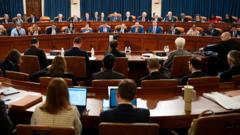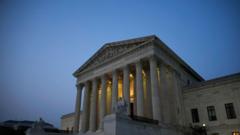The United States experiences a significant downgrade in its credit rating from Moody's, marking the loss of its last 'AAA' status due to escalating debt and ineffective fiscal policies.
US Credit Rating Downgraded: A Major Financial Setback

US Credit Rating Downgraded: A Major Financial Setback
Moody's lowers US credit rating amid surging debt concerns and political turmoil
In a stunning shift, the United States has lost its last remaining perfect credit rating, with Moody's Investors Service downgrading its assessment from 'AAA' to 'Aa1' due to growing concerns over the government’s capacity to manage its debt. The ratings firm highlighted the inability of consecutive administrations to address the escalating deficits and increasing interest expenditures. Holding a 'AAA' rating means a country is viewed as financially robust and reliable in repaying its debts.
Moody's had previously warned in 2023 that the triple-A rating was at risk, joining Fitch Ratings which downgraded the US in the same year, and S&P Global, which made the cut in 2011. Notably, Moody's had maintained a flawless credit rating for the US since 1917.
In a detailed statement, Moody's pointed out that the US has seen its government debt and interest payments rise to levels much higher than other nations with comparable ratings. Responding to the downgrade, a White House representative labeled it a consequence of "Biden's mess," critiquing Moody's credibility for its previous silence during fiscal challenges.
The downgrade comes at a critical time, increasing the potential for higher borrowing costs and the risk of defaults. Nonetheless, Moody's recognized that the US maintains exceptional strengths such as its large economy, resilience, and the pivotal role of the US dollar as a global reserve currency. Looking ahead, it projects that federal debt may escalate to approximately 134% of GDP by 2035, rising from 98% recorded last year.
This downgrade coincides with troubling economic indicators, such as a reported contraction of the economy by an annual rate of 0.3% in the first quarter as federal spending declined and imports surged, with firms preparing for impending tariffs. Additionally, a proposed major spending bill from former President Trump faced obstacles in Congress as some Republicans voted against it, further complicating the financial landscape.




















